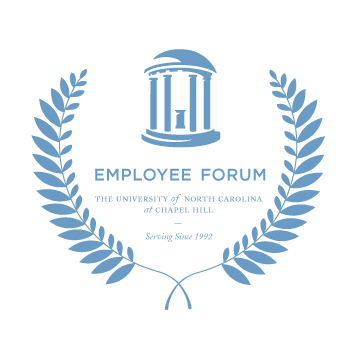At the Employee Forum’s December 2, 2015 meeting, Ashley Nicklis (Senior Director, HR Benefits and Work Life) presented on the different types of leave available to University Employees. You can find the basics about employee leave on Human Resource’s website, but we’ve collected some of the more helpful questions—and Nicklis’s answers—here. Questions and answers have been edited for clarity.
Q: What is civil leave?
A: Civil leave is a form of paid leave available to employees when called for jury duty or when called as a witness as part of one’s job. There is usually not a maximum amount of civil leave awarded in most cases.
Q: What kind of leave should employees use if they are taking a class?
A: Any courses during work hours should be first worked out with your supervisor. For classes that are not job-related, employees should either flex their schedule (e.g., come in or stay late to make up the time missed for class) or use vacation leave to cover absences. For classes that are job-related, employees may use educational leave. If the University is paying for the class, up to five hours a week are eligible.
Q: How does military leave work?
A: The University will pay 30 days of military leave to active or reserve military personnel called into active duty; after 30 days, it will pay the difference between the individual’s military and UNC pay, if the UNC pay is greater. Employees serving as reservists receive 120 hours of military leave each federal fiscal year (October 1-September 30), and there are other provisions governing military leave.
Q: How much vacation leave am I eligible for?
A: Each classification of employee earns leave differently, prorated based on FTE. EHRA employees (formerly “EPA non-faculty”) in Tier 1, such as the Chancellor and Vice Chancellors, earn 26 vacation days a year. EHRA non-faculty employees in Tier 2 earn 2 days a month (24 days a year). SHRA employees (formerly “SPA”) earn an increasing amount of vacation leave, up to 17 hours a month for employees with 20 years or more of State service. Vacation is the most universal leave that can be used in any instance, with managerial approval.
Q: How does sick leave accrue?
A: All employees, EHRA-non faculty and SHRA, earn sick leave at a rate of 8 hours a month (again, prorated according to FTE). For all leave-earning employees, if you accrue more than 240 hours of vacation leave, those hours above 240 are rolled over into sick leave each January 1st.
Q: What is bonus leave?
A: Bonus leave is usually awarded by the legislature, and there are a couple different kinds. Some leave never expires, while other leave expires at the end of the fiscal year. (The link can help you figure out what kind of bonus leave you have, if you have any.) Bonus leave that does not expire does not count towards the 240 hour a year limit.
Q: Which leaves get paid out when I retire or leave UNC?
A: Upon retirement, the University will pay out, up to the appropriate limit, vacation and bonus leave but not sick leave. Sick leave can be credited towards Teachers and State Employees Retirement System (TSERS) service, but Optional Retirement Program (ORP) enrollees forfeit their sick leave upon retirement. All employees who separate from the university (not retire) can retain their sick leave for up to five years following termination; if they are re-employed by UNC or another state employer, their sick leave will be waiting for them.
Q: How much leave can I donate through the voluntary shared leave program?
A: Employees can donate up to 40 hours of sick leave to someone who is not a member of their family, but the University allows unlimited donations of leave to “immediate family” members (the link defines who counts). Some units and departments do place limits on the amount of shared leave their employees can accept or donate for budgetary reasons. There are lots of rules around sharing leave, so be sure to check with your HR Liaison and manager if you are considering this option.
Q: How does community service leave work?
A: There are three different kinds of community service leave—Options A, B, and C—and each allows for different amounts of paid time. Option A provides employees 24 hours a year to spend on school involvement (e.g., with a teacher about your child meeting or attending a function), with community service organizations (e.g., a nonpartisan, nonprofit organization like Habitat for Humanity), or volunteering with a public university, community college or state agency. Option A cannot be used to cover religious or political activities that promote a particular belief (e.g., leading bible study or campaigning for an individual candidate), but it can be used for non-partisan activities (e.g., volunteering at a polling station, working at a soup kitchen). Option B allows employees 1 hour/week, for up to 36 hours of paid time, to volunteer as a tutor or mentor to students in a formal program. Option C allows employees up 5 hours a month, up to a total of 45 hours of paid leave, to volunteer with a public school literacy program. Employees may take advantage of only one option a year. Managers may request evidence of employees’ participation, but there is not universal requirement for proof of volunteering.
Thank you to Ashley Nicklis for providing the overview of paid leaves, to Matt Banks for recording the minutes, and to the following delegates for asking excellent questions: Jo-Ann Blake, Sharon Brinson, Shantell Ferrell, Victoria Hammett, James Holman, Todd Hux, Kathy James, Kirk McNaughton, Kathy Ramsey.
